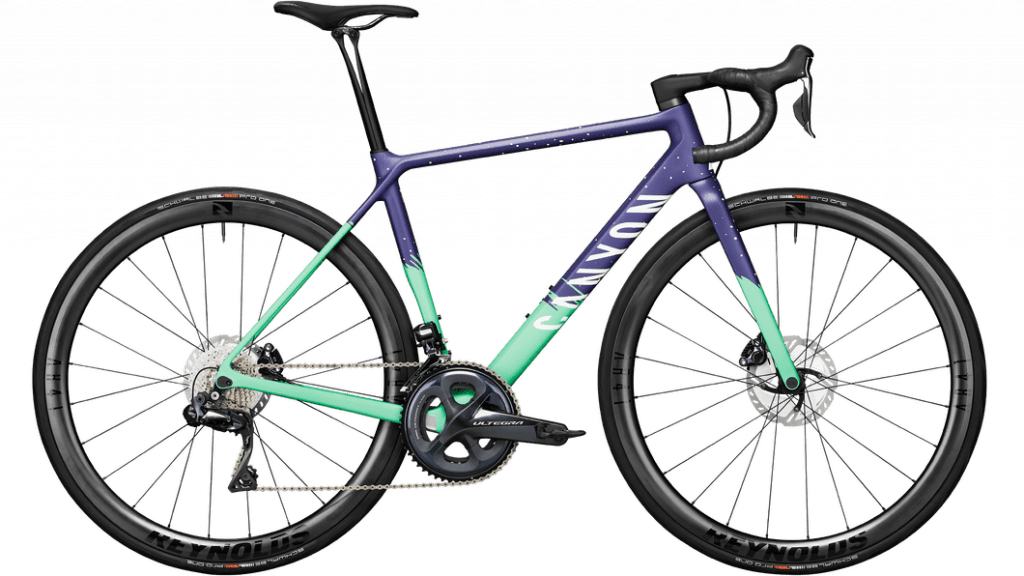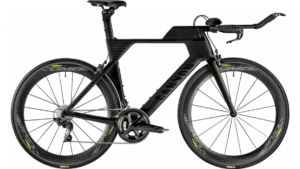The Bike leg will cost you more than any other part of triathlon with triathlon bikes costing from $1-10,000, so you need to make sure that you get the bike that is right for you.
Firstly and to the purist, most contentiously, what bike you do your first triathlon on doesn’t matter, as long as it’s comfortable enough to ride for however long you need to ride it for!
These days cycling is a massive business that’s sailing a wave of high disposable income, later life activity and ecological thinking which allows it to sustain a vast range of microniches, providing more and more specialist bikes for each sub-genre of cycling and making choosing difficult.
If we ignore the mountain, gravel and commuter bikes for now ( and definitely forgetting ebikes!!), there are three main types of road bike you can pick from.
- Endurance bikes
- Climbing bikes
- Aerodynamic frames including time trial bikes
I have used the Canyon bikes as an example, but obviously there are a lot of excellent providers out there, depending on your budget, and don’t forget to support your local bike shop and look out for bike to work schemes that let you offset your bike purchase against tax.
Endurance Bikes
Endurance bikes tend to have a more relaxed geometry and are designed to let you ride comfortably and fast over extended times, emphasising a comparatively upright position. They are not as light or stiff as Climbing bikes, but are lighter and generally much cheaper than aero bikes. Whilst they are a compromise between the two extremes not being as good at top speed or climbing hills as the other two ends, they are more flexible.
This means tat they are probably more suited to touring or commuting that the other types, being offering both a more relaxed cycling position and more forgiving ride than pure racing bikes. They may also offer more flexibility in terms of accessories and luggage that the other bikes, which can often not allow mudguards or thinker tires for example.
The Canyon Endurance is a good example in this category.

Climbing Bikes
The climbing bikes emphasis weight and stiffness over aerodynamics and comfort, but for the purist racer, they offer higher acceleration, better handling and significantly improved climbing performance than the other two types.
This is the traditional racers bike that you’d see on tours like the tour De France or the Giro D’italia. They are fast, very light and stiff, but can be uncompromising, so may not be the most comfortable. They are built to be UCI compliant, and whilst this is not needed for triathlon, will allow you to compete in road races if you plan on taking your cycling seriously.
Again, using Canyon as an example, their Ultimate bike is a favourite with a strong racing pedigree.

Aero or TT specific bikes
The aerobikes are a relatively new phenomenon, thanks in large part to the rise in triathlon and Ironman events, where long distances at high speed require a much more aerodynamic bike and cycling position. These bikes emphasis front on aerodynamics, with slim frames, recessed bikes and deep-section wheels to reduce the drag and save a few watts in lost power which will save you time over the length of a race.
Learn more about the aerodynamics of cycling.
There are downsides, however.
Firstly cost. A truly aero bike will be carbon fibre, as it’s difficult to build the right profiles needed out of anything else, and all components need to be specially made to comply with the frame geometry. It also affects accessories like bottle cages, food bags etc, which will also need to be purchase specifically for the bike to avoid reducing the aerodynamic efficiency of the demand
Secondly, they are generally heavier. Canyon’s entry-level Triathlon bike is over 1kg heavier than it’s an equivalent race bike, a 15% weight penalty, which is massive in a sport that measures gains in terms of grammes. It’s also €700 more expensive.
Thirdly, the riding position tends to be more aggressive, as you need to be in an aerodynamic position as well. This emphasises a lower front end and a long body which pushes your arms further forward and inwards, which can be a problem for the larger or less flexible rider. Don’t forget, you account for 80% of the drag on a bike, so if you aren’t aerodynamically efficient, your bike’s shape isn’t going to make up the difference.
A True TT or triathlon bike may not be allowed to compete in normal road races either and may also restrict you ability to take part in group rides,, so you might want to think about that if you have aspirations to ride with clubs or in traditional bike competitions or sportifs.
However, with deep-section wheels, sleek lines, hidden cables and recessed they do look exceptionally good!!
There are two forms here. One are the traditional time trial and triathlon bikes, which allow a full aero position to be adopted with arm extensions and elbow pads, like the Canyon speedmax.

The other are hybrid bikes which offer very aerodynamic frames and components but a more traditional riding position, which have become more popular in both road races and draft legal triathlons, where specialist triathlon/TT. bikes are not allowed. An Example is the Canyon Aeroad.

